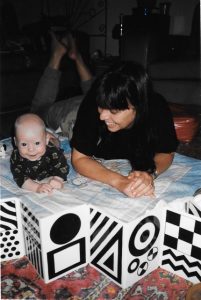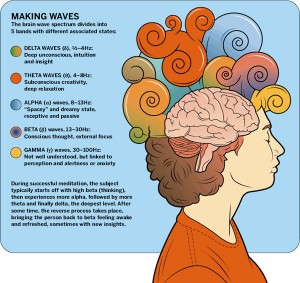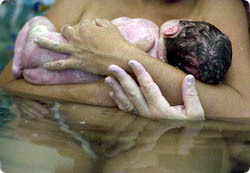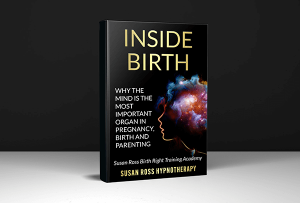Many still hold the view that parenting begins once baby is born – or even later in childhood, but a baby in the womb is developing not just physically, but emotionally, intellectually and spiritually. Pregnancy is the beginning of very important parenting, laying down the foundations for baby’s future life. The influence a parent has over development, is at its peak in the womb, creating a connection between parent and child and emotional grounding for life.
Dr David Chamberlain (author of ‘Windows to the Womb’) states “a baby surrounded with anger, fear, and anxiety will be adjusting itself to that world and may carry those settings forward unless something changes. Patterns of fearful reaction already visible via ultrasound.”
There is much research today showing that babies in the womb have a range of experiences, they start to form patterns of interaction, they show appreciation for music and conversation and commit these to memory – all before they are born. It is womb school where they memorise both Mum’s and Dad’s voice and their native language and much more.
HAVE FUN AND ENJOY YOUR BABY
The more involved you are with your baby from conception, the deeper the connection you will develop. There are many activities to include in your baby’s vital education ‘inside’, which can continue on the outside:-
• PLAY MUSIC – and tell your baby what it is, who is the composer, and why you like it
• READ BOOKS – they don’t have to be specifically children’s books, it may be a book that you are enjoying reading (obviously not the crime novel!) Read it out loud and tell your baby the name of the book, the author and why you are enjoying it. Babies do enjoy children’s books, as most adults have a higher pitch voice when reading.
• READ POETRY – a baby in utero clearly responds to the rhyming nature of a poem
• TOUCH – this often happens quite spontaneously. How often have you seen a pregnant woman standing in a queue, swaying and rubbing her belly in a rhythmical, circular motion? Exactly as she will do when baby is born, and babies love this touch inside and outside the womb.
• TALK TO YOUR BABY – this is the most important. Pretend your baby is in the outside world and let him know exactly what you are doing. Say good morning and explain to baby what’s on the agenda for today. Maybe work, or exercise or visiting family, coffee with a friend – whatever is on your day’s agenda, share it with your baby. He will be alerted, interested but most of all love the connection you are sharing and this connection will continue to make him feel safe.
• MEDITATION and relaxation – every pregnant woman should ideally try and schedule this daily. A baby loves feeling and sensing his Mum’s total relaxation, stillness and deep presence.
OWN YOUR OWN STUFF
None of us can feel happy and positive all the time. It is not normal! Experiencing a range of emotions helps each and every one of us to grow and develop, making mistakes and learning from them. What is important is how a parent manages these emotions during pregnancy. If parent’s are having a disagreement or argument with a work colleague, simply touch baby (belly) and explain that whilst you do not agree on ‘the political situation’, or whatever, it has not got to do with him (baby). This is great practice for what you can continue when baby is born. All children are very easily frightened, especially when parents and family around them have raised voices and always believe it is their fault. Simply explain the disagreement and reassure baby, both ‘inside’ and ‘outside’. Babies are very forgiving and accepting. This is the beginning of normalising a reality.
WHAT HAPPENS IF YOU ARE FEELING SAD?
Talk to your baby and explain what you are feeling sad about, but always reassure him he is safe, you love him and it’s not got to do with him.
WHAT HAPPENS IF YOU ARE FEELING HAPPY?
Talk to your baby. Tell him what is making you happy and how you cannot wait to share this with him, on the outside. He will sense and feel your joy and appreciate the flood of oxytocin coming his way – the love hormone.
IMPACT ON BIRTHING
Developing a relationship with your baby, from conception, and sharing your daily life and thoughts with him will enhance your enjoyable birthing experience.
Imagine the power of developing that connection with your baby in utero, knowing his quiet and active times, understanding his responses to music and conversation, enjoying the wonderful emotions of love and protection you have developed. The laying down of all the positive emotions you have done during pregnancy, the education and the wishes and dreams you have for your baby. Tell him how you are looking forward to meeting him on the ‘outside’ (once he is fully grown), and encouraging his ongoing education, growth, development, confidence and love. Nobody knows or understands your baby better than you. Trust that!
During labour this beautiful connection will continue, with both Mum and baby, genuinely looking forward to meeting on the outside. This scenario makes labour and birth flow smoothly, easily and with pure joy.
Like to find out more about connection in the womb? then follow this link:
https://birthright.com.au/antenatal-classes/inside-birth-antenatal-classes/
Like to learn how to teach Inside Birth® classes? then follow this link:
https://birthright.com.au/training/inside-birth-childbirth-educator-training/








 You may hear the word ‘brainwaves’ frequently used, but exactly what are they, why do we have them, and what do they do?
You may hear the word ‘brainwaves’ frequently used, but exactly what are they, why do we have them, and what do they do? Fear is at the heart of all anxieties surrounding birth. In my experience 90-95% women have fears.
Fear is at the heart of all anxieties surrounding birth. In my experience 90-95% women have fears. Look at this language – “I am open”, there are many different interpretations. Firstly the use of the word “I” so who owns this birth? Surely the birth belongs to Lisa and her baby. “I” would also suggest an intention to be in control, in charge of the birthing. Surely it’s Lisa and her baby who are in control of the birth. “I am open” also indicates the possibility of hearing what you want, therefore I am prepared to listen (maybe) but I, the Doctor have my own agenda, so I will indulge you, whilst you tell me what you think is going to happen, not that you, the woman, would know, because I am the expert here. And what does “natural birth” mean? Does this mean a normal birth, without interference, or is there a hidden agenda. Because for him, the Doctor, a natural birth, without interference, is not very exciting. Is this what he has trained all these years for? To be just hanging around, not using any of his skills, to watch a baby being born normally? People study medicine and become Doctors because they love the drama, and adrenaline rush of a medical emergency. They have trained for many years to perfect these skills. So it’s understandable that an Obstetrician, would prefer some type of emergency, or at the very least something abnormal, where he has the opportunity to use his skills. The ventouse or forceps birth, the emergency Caesarean section. He has also undertaken a medical degree because on some level his personality dictates rescuer or saviour. A Doctor gets satisfaction from saving the day! Or rather saving the mother and baby.
Look at this language – “I am open”, there are many different interpretations. Firstly the use of the word “I” so who owns this birth? Surely the birth belongs to Lisa and her baby. “I” would also suggest an intention to be in control, in charge of the birthing. Surely it’s Lisa and her baby who are in control of the birth. “I am open” also indicates the possibility of hearing what you want, therefore I am prepared to listen (maybe) but I, the Doctor have my own agenda, so I will indulge you, whilst you tell me what you think is going to happen, not that you, the woman, would know, because I am the expert here. And what does “natural birth” mean? Does this mean a normal birth, without interference, or is there a hidden agenda. Because for him, the Doctor, a natural birth, without interference, is not very exciting. Is this what he has trained all these years for? To be just hanging around, not using any of his skills, to watch a baby being born normally? People study medicine and become Doctors because they love the drama, and adrenaline rush of a medical emergency. They have trained for many years to perfect these skills. So it’s understandable that an Obstetrician, would prefer some type of emergency, or at the very least something abnormal, where he has the opportunity to use his skills. The ventouse or forceps birth, the emergency Caesarean section. He has also undertaken a medical degree because on some level his personality dictates rescuer or saviour. A Doctor gets satisfaction from saving the day! Or rather saving the mother and baby. Probably because we begin our lives surrounded by water, most people find great repose with water. For thousands of years women have been using water for labour and birthing, they have used it ritually, and find great comfort in being immersed during labour. If there is a birthing pool or bath available to a woman in labour, it is very common, at some stage during labour, for her to gravitate to the water. It works its magic, especially for a woman who is anxious and physically very tense. This is no different than using water at other times in our lives. There is nothing more relaxing at the end of a stressful work day, or if you feel unwell or anxious, to relax, either in a shower or a bath. You can feel your tense body becoming more relaxed as it is bathed in warm water.
Probably because we begin our lives surrounded by water, most people find great repose with water. For thousands of years women have been using water for labour and birthing, they have used it ritually, and find great comfort in being immersed during labour. If there is a birthing pool or bath available to a woman in labour, it is very common, at some stage during labour, for her to gravitate to the water. It works its magic, especially for a woman who is anxious and physically very tense. This is no different than using water at other times in our lives. There is nothing more relaxing at the end of a stressful work day, or if you feel unwell or anxious, to relax, either in a shower or a bath. You can feel your tense body becoming more relaxed as it is bathed in warm water. Educators are very important people in our community. Our Government spends many millions on all levels of education but not much focus on antenatal education, apart from the inadequate hospital based classes offered in most public hospitals.
Educators are very important people in our community. Our Government spends many millions on all levels of education but not much focus on antenatal education, apart from the inadequate hospital based classes offered in most public hospitals. 8 key elements for every pregnant woman to consider
8 key elements for every pregnant woman to consider LTERNATIVE THERAPIES NOW MAINSTREAM
LTERNATIVE THERAPIES NOW MAINSTREAM HOSPITAL AND DOCTOR FOR YOUR BIRTH CRAZY CONCEPT?
HOSPITAL AND DOCTOR FOR YOUR BIRTH CRAZY CONCEPT? BIRTH HORMONES LET THEM FLOW
BIRTH HORMONES LET THEM FLOW